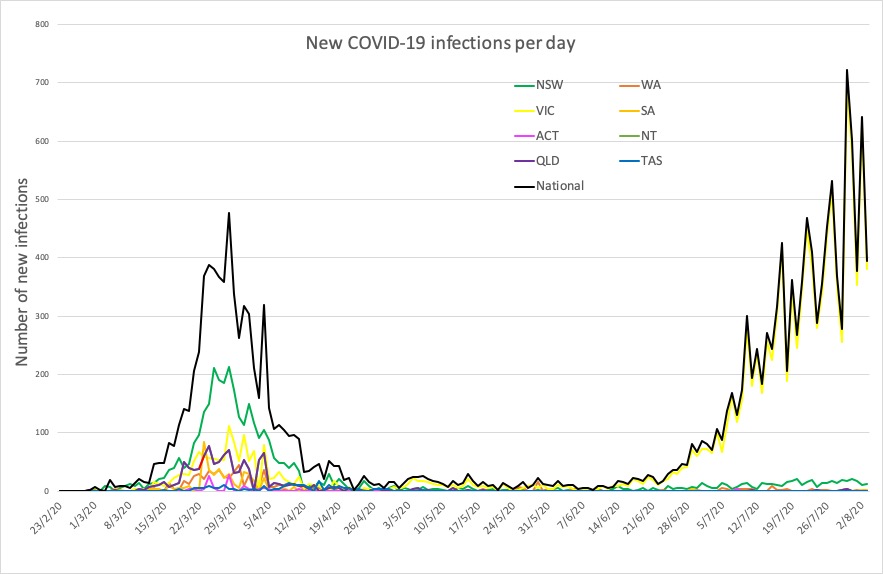The introduction of stage 3 restrictions in Victoria at the start of July may have avoided 9,000–37,000 infections that month alone, research suggests.
Welcome to The Medical Republic‘s COVID Catch-Up.
It’s the day’s COVID-19 news into one convenient post. Got any tips, comments or feedback? Email me at bianca@biancanogrady.com.
4 August
- Stage 3 restrictions in Melbourne may have avoided tens of thousands of new infections.
- Social distancing not associated with major drops in consumer spending, study suggests.
- Macular degeneration and coagulation disorders linked to worse COVID-19 outcomes.
- Latest confirmed COVID-19 infection numbers for Australia.
- The introduction of stage 3 restrictions in Victoria at the start of July may have avoided 9,000–37,000 infections that month alone, research suggests.
In a non-peer-reviewed paper published in the Medical Journal of Australia, researchers compared the infection growth rates before and after the restrictions were introduced for metropolitan Melbourne and Mitchell Shire, and estimated how that growth would have continued in the absence of the public health measures.
After accounting for the lag associated with incubation periods, testing times and the effect of interventions, they calculated that the absence of restrictions would have seen cases growth by around 27,000 by July 30, compared to the 8314 cases that were diagnosed during that period.
“Our results show that the control measures introduced by the Victorian Government in early July were highly effective in reducing the resurgence in COVID-19 transmission, leading to a reduction in Reff [effective production number] from an estimated 1.75 to 1.16,” they wrote. However to achieve a true flattening of the curve, a further 14% reduction in growth needed to be achieved. - Social distancing restrictions are not associated with significant reductions in consumer spending, according to a comparison of spending between Denmark – which imposed significant restrictions – and Sweden, which did not.
The analysis, published in PNAS, looked at total consumer spending from 1 January 2018 to 5 April 2020 in Denmark and Sweden, using data from the region’s second largest bank. They found that spending dropped sharply – by around 25% – in both countries as the pandemic took off, but only decreased a further 4% in Denmark with the introduction of that country’s shutdown measures. Spending dropped more sharply among people aged 18-29 years in Denmark compared to those in Sweden, but among those aged over 70 years, spending dropped more in Sweden than in Denmark.
Sweden has so far reported more than 80,000 cases and 5700 deaths, while Denmark has reported just over 13,700 cases and 615 deaths.
“The positive effect of the shutdown on the economic activity of the elderly suggests that the Danish shutdown served to contain the spread of the virus and hence reduced the need for extreme self-isolation among those most at risk for severe health consequences,” the authors wrote. - Macular degeneration or a history of coagulation disorders could pose a greater risk for COVID-19 mortality, according to a retrospective cohort study published in Nature Medicine.
Researchers analysed data from 11,116 individuals who presented to a single New York hospital with suspected COVID-19, 6398 of whom tested positive for SARS-CoV-2. They found that individuals with age-related macular degeneration – a proxy for complement activation disorders – and those with coagulation disorders such as thrombocytopaenia, thrombosis or haemorrhage, were significantly more likely to experience adverse COVID-19 outcomes, including mechanical ventilation and death. This was evident even after accounting for age and sex. - Here are the confirmed COVID-19 infections around Australia to 9pm Monday:
National – 18,318, with 221 deaths and 439 hospitalised.
ACT – 113
NSW – 3797
NT – 33
QLD – 1085
SA – 455
TAS – 229
VIC – 11937
WA – 669



